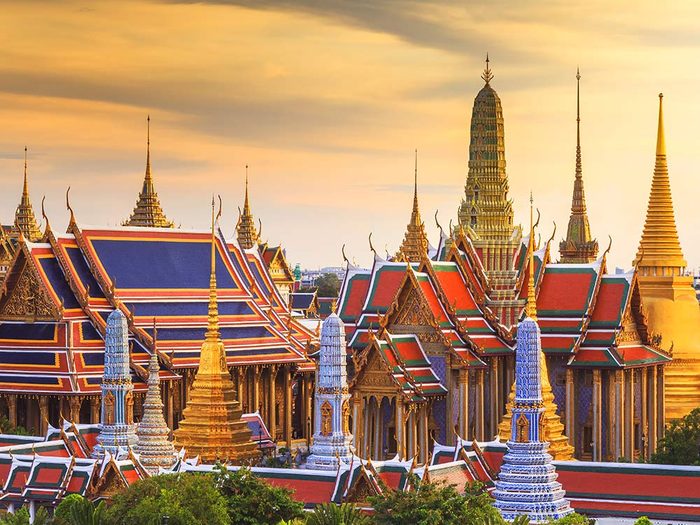
1. Wat Phra Kaew, Thailand
This is the famous Temple of the Emerald Buddha, the holiest of all temples in Thailand. The name only indicates the central image’s colour—the statue is actually made of a single piece of jadeite. Only the King is allowed to touch the Buddha image, and he does so three times a year to change its clothes depending on the season. The temple complex is located within Bangkok’s Grand Palace grounds and features reflective tiles, towering chedis, and many exotic statues. Another Bangkok icon, the Reclining Buddha, is located just down the street. It’s no wonder it made it on our list of the world’s most beautiful temples!
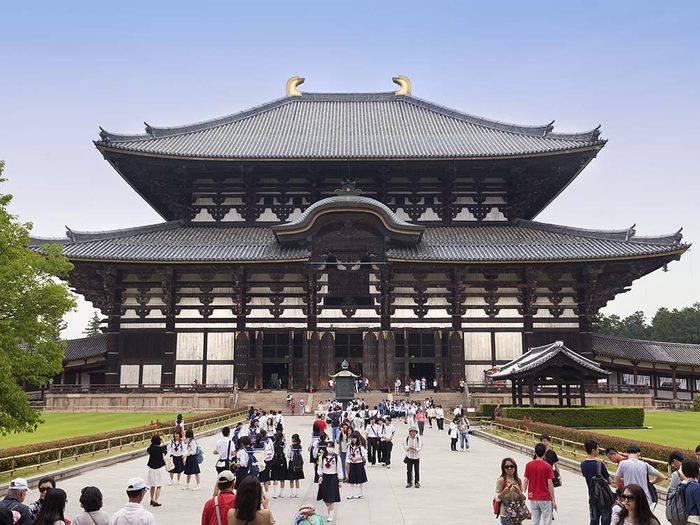
2. Todaiji Temple, Japan
Originally built in 752 in the city of Nara, this centre of Japanese Buddhism was very politically influential in its day. Also known as the Eastern Great Temple, Todaiji Temple is both a UNESCO-honoured site and the largest wooden structure in the world—despite the fact that it’s about a third smaller than its original size. Twice destroyed by fire, the main temple standing today was completed in 1709. Inside, visitors can see Japan’s largest Buddha statue cast in bronze. When the statue was complete it had taken up most of the nation’s bronze production and almost left Japan bankrupt.
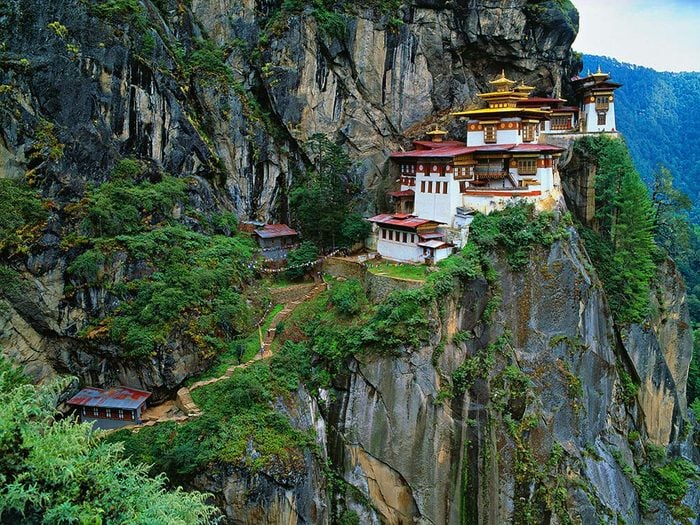
3. Taktsang Monastery (Tiger Nest), Bhutan
This monastery began as a meditation cave and only in 1692 was a temple building constructed in its precarious position overlooking the Paro Valley in Bhutan. Buddhism was brought to the area in the 7th century, and it is said that Guru Rinpoche, known as the second Buddha, came flying over the Himalayas from Tibet on the back of a tigress. This is just one of several tiger caves he meditated in. The hike up to the monastery takes two hours, although visitors aren’t typically allowed inside.
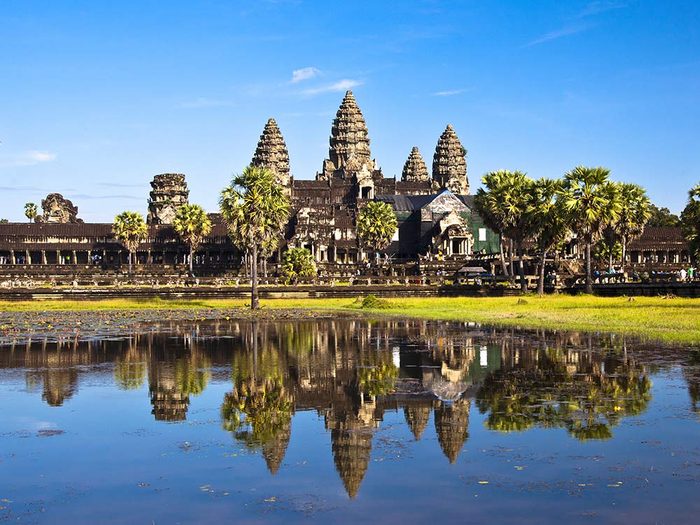
4. Angkor Wat, Cambodia
So exotic and exciting, Angkor has made its way into some action and adventure movies. This vast city of temples half engulfed by trees and jungle life was built for King Suryavarman II in the 12th century. Exploring the many structures has a certain Indiana Jones feeling to it, but this is more than just a collection of ruins. For example, one can still see offerings and ceremonies in Angkor Wat which, thanks to its surrounding moat, never really succumbed to the creep of nature.
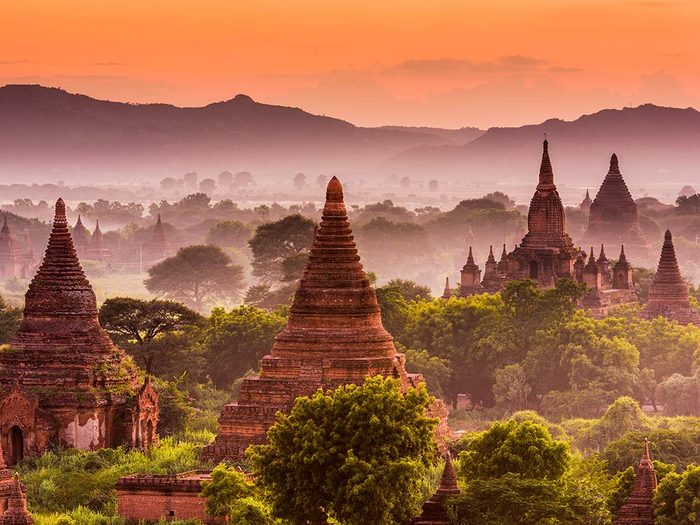
5. Bagan, Myanmar
Spread across a flat area of about 26 square miles along the east bank of the Ayeyarwaddy River, Bagan in Myanmar was once home to 4,400 temples (2,200 of them remain standing). Primarily constructed from the 11th to 13th centuries, these temples and pagodas are world heritage material and travellers who make it there explore all day before choosing one to climb for the sunset.
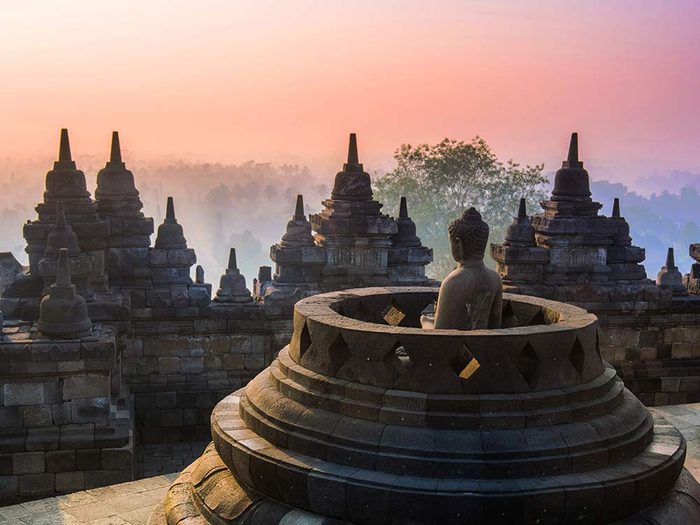
6. Borobudur, Indonesia
This 9th century Buddhist construction in Central Java is Indonesia’s greatest tourist attraction. Borobudur is a UNESCO World Heritage Site and each year it draws pilgrims especially for the national holiday Waisak. The date changes each year and is determined with the full moon in May or June and commemorates Lord Buddha’s life and death and attainment of enlightenment. With nine platforms, this is the largest Buddhist monument in the world, with a height of 34.5 m. What most visitors won’t notice, however, is that when viewed from above, Borobudur has the shape of a mandala—concentric shapes that represent Buddhist cosmology.
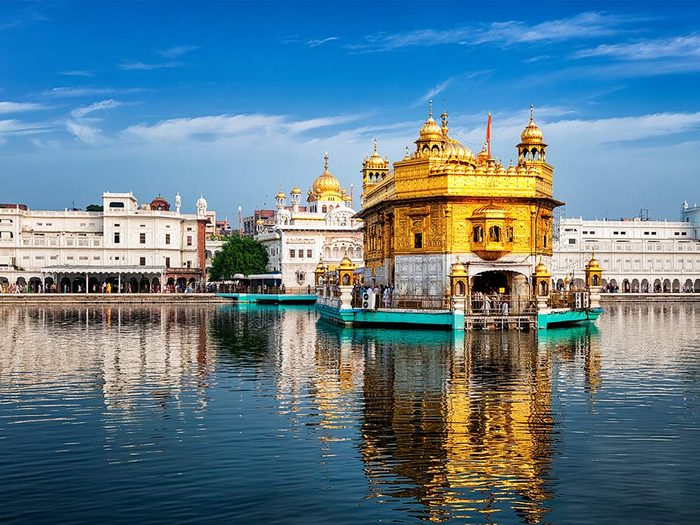
7. Harmandir Sahib, India
Commonly referred to as the “Golden Temple,” this is a Sikh holy site in India’s Punjab. The gold-plated structure is surrounded by gleaming white buildings and a reflective, holy lake. The Sri Guru Granth Sahib, the sacred scriptures of the Sikh, are contained within. Though this is the holiest of the Sikh sites, it’s open to people of all origins and beliefs and was constructed with that concept in mind. This openness is symbolized in its four entrances. Visitors can enter but must first cover their heads, remove their shoes and wash their feet. One of the best times to visit is during Bandi Chhor Divas, when lamps light up the temple and fireworks are launched thus reflecting in the lake.
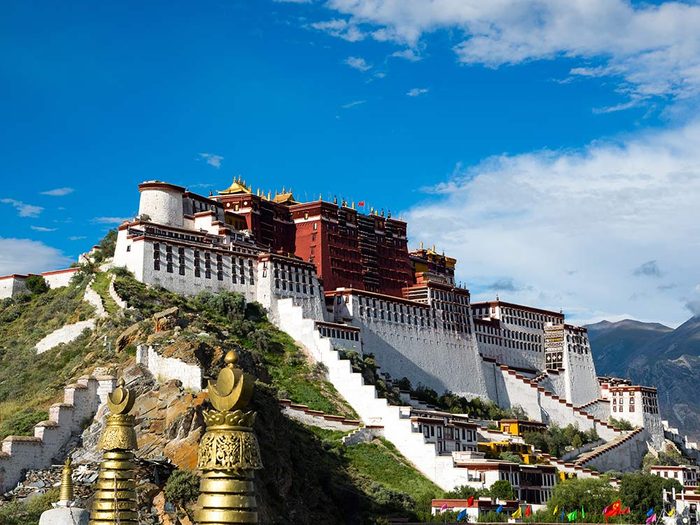
8. Potala Palace and Jokhang Temple, Tibet
Here’s another amazing temple in the world. These two sites in Lhasa, at the rooftop of the world, are visible to each other from their own rooftops. About a mile separates them. The palace was the home of the Dalai Lama until the 14th Dalai Lama fled when Chinese troops cracked down after a failed Tibetan uprising in 1959. The seventh-century temple, alight with candles, is the spiritual centre of the Tibetan people, and they come from all corners to turn prayer wheels and make offerings with yak butter.
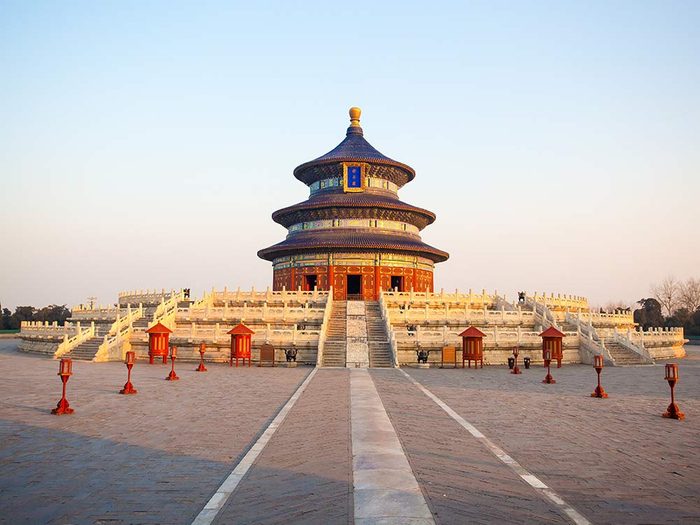
9. Temple of Heaven, China
This attraction, which is more literally known as the Altar of Heaven, is located in Beijing and is not to be missed. The tower-like central structure, the Hall of Prayer for Good Harvests, is entirely made of wood and no nails were used. The Taoist temple dates back to the early 15th century and was an important prayer site for emperors who performed ceremonies twice a year to guarantee good weather and good harvests. It was believed that even the smallest error in the performance of this rite could bring bad fortune. Now it is common to see Beijing residents gathering in the park for daily exercise.
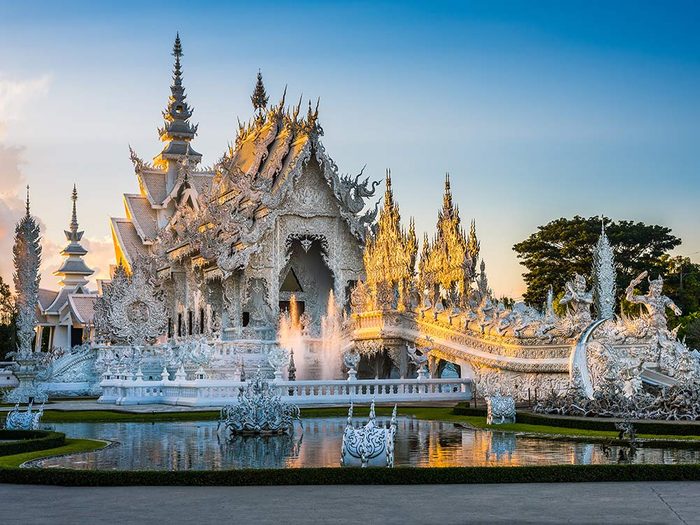
10. Wat Rong Khun, Thailand
Unlike many of the other holy structures on this list, Wat Rong Khun is a new arrival. Whereas most other Thai Buddhist temples show glittering collections of colours and tiles, this construction, begun in 1997, is purely white, a symbol of the purity of the Buddha. Inside are symbols from the modern world, such as Spiderman and Batman, while outside are more traditional icons one associates with the Thai temples. What will likely get a visitor’s attention first is the “moat” of skulls and human hands reaching up to the walking-bridge entrance to the assembly hall. Artist Chalermchai Kositpipat is the creative genius behind this impressive site located in Northern Thailand.